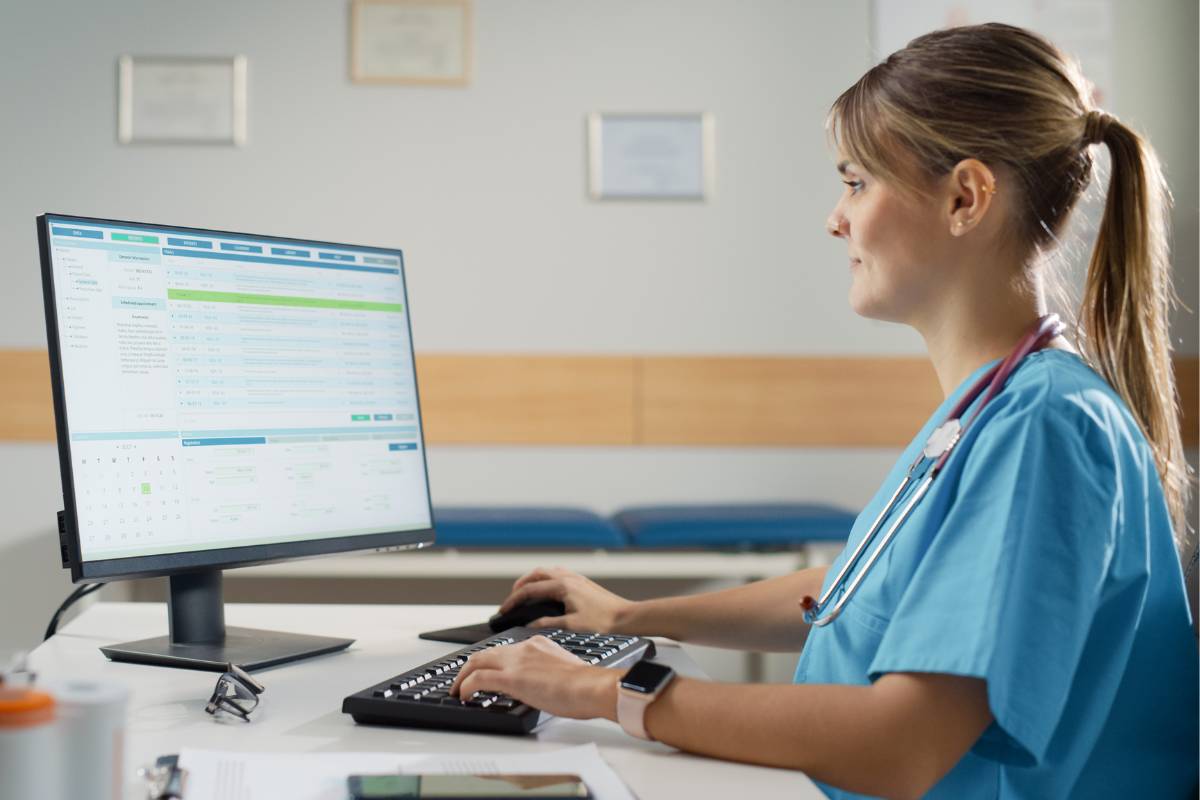Subjective vs. Objective Nursing Data: What’s the Difference?

What’s the difference between subjective vs. objective nursing data, and why does it matter? The information you collect in a patient assessment is the beginning of the nursing process. The rest of the healthcare team needs the data you gather during that crucial first step to effectively treat the patient moving forward.
Your ability to differentiate between subjective and objective data will help you correctly apply what you’ve learned about your patients. In this article, we define these two types of data, share examples and advice on how to collect them, explore their pros and cons, and more.
Subjective vs. Objective Data: Definitions and Examples
First, let’s delve into what these two forms of information are. We also include examples to give you a practical understanding of each.
Subjective Nursing Data
Subjective data is information you’ve learned from the patient or caregiver. In other words, it’s their perspective on why they are seeking help.
Subjective Data Nursing Examples
- Verbally expressed emotions
- Backstory leading up to visit
- Cultural background
- Patient’s or caregiver’s description of ailment
Objective Nursing Data
Objective data is information and observations you’ve collected from your nursing assessment. It’s the data you’ve gathered without the patient’s input.
Objective Data Nursing Examples
- Vital signs
- Auscultations
- Visual observations
- Odors
Why Learn the Difference Between Subjective vs. Objective Nursing Data?
It’s crucial for you to be able to differentiate between subjective vs. objective data — nursing wouldn’t be the same without them. Both are equally important, but the way they’re used differs. Objective data drives the bulk of the care plan, while subjective data helps the healthcare team tailor the treatment to the patient’s unique situation.
For example, you can’t argue with vital signs. They objectively reveal what the body is communicating in the present moment. If they’re outside of the normal range, the team must work towards returning the patient to health.
On the other hand, the patient’s subjective explanation of how they became ill can inform the staff on the necessary patient education and most effective way to assist that individual.
How Do You Collect Subjective and Objective Data?
As you can see, both objective and subjective data are necessary to treat patients, ensuring the information you gather is well-rounded. Keep the following advice in mind when you’re with a patient.
5 Tips for Collecting Subjective Data
- Practice active listening.
- Ask follow-up questions.
- Ensure your responses are free of judgment.
- Document a patient’s specific word choice.
- Make patients feel comfortable by showing compassion.
5 Tips for Collecting Objective Data
- Be observant.
- Conduct thorough assessments.
- Obtain informed patient consent for assessments.
- Ensure your senses are unhindered.
- Be mindful of your own biases.
Pros and Cons of Subjective vs. Objective Data in Nursing
Despite their respective importance, both forms of nursing data have their drawbacks. Be aware of these pros and cons to maintain a balanced view of the situation.
Subjective Data
Pros:
- You learn about the patient’s attitudes towards the situation.
- Context helps you address their specific needs.
- Patients’ perspectives can clarify confusion.
Cons:
- You may have to sift through a patient’s biases and stress responses.
- Patients may omit important bits of information.
- Potential language barriers can impede communication.
Objective Data
Pros:
- Your observations are informed by your knowledge and expertise.
- The information lacks patient bias.
- Medical equipment can eliminate your bias
Cons:
- There’s little to no situational context.
- Data contradictions may lead you to dismiss subjective information.
- You may mistake your own bias for objective data.
Real-World Example of Subjective vs. Objective Nursing Data
Here is a scenario in which you must discern between subjective and objective data. Can you tell the difference between the two types?
A 4-year-old patient, accompanied by a parent, is taken to your primary care office with complaints of nausea and vomiting. The tearful child clutches her stomach and states she feels “icky and rolly.” The parent states the child’s symptoms began this morning after returning from a birthday sleepover at a peer’s house. The parent also says that when she spoke to the peer’s guardian, they mentioned the child ate homemade birthday cake that morning after it was left unrefrigerated overnight.
T=101.1
RR=34
HR=100
BP= 105/66
Lung Sounds: Clear
Abdominal Sounds: Hyperactive
Subjective Data:
- “Icky and rolly”
- Parent’s description of symptom onset and details regarding sleepover
Objective Data:
- Vital signs
- Lung sounds
- Abdominal sounds
- Tearful affect
- Clutching stomach
What comes next? You must document the subjective and objective information. Note that you don’t have to write down everything the patient and parent said word for word, but a few direct quotes would be ideal. It’s best to avoid sharing your personal opinion on the diagnosis before the patient is seen by the physician.
Next, you’ll discuss what you learned with the physician and other relevant coworkers. Realistically, you might not get to speak with them before they assess the patient, hence the importance of thorough documentation. After the patient is seen, you can take the next steps recommended by the physician.
Ready to Take Your Nursing Knowledge to a New Role?
Now that you know the difference between subjective vs. objective nursing data, improve your practice by applying what you’ve learned. Need some help with that? Learn how IntelyCare can help you find a nursing job that suits you today.
